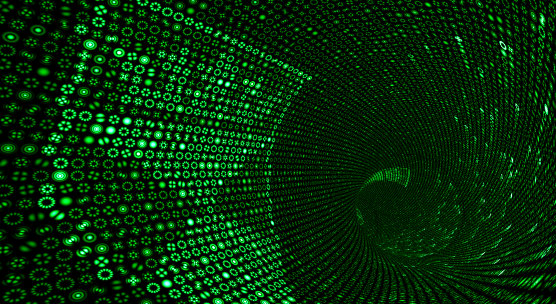Breakthrough in fibre optics opens up possibility of better understanding of disease and communication revolution
Published On Mon 13 Jul 2015 by Grant Hill

A new study from the University of Dundee could open up a new era of superfast communications technology and lead to breakthroughs in the treatment of medical conditions such as Alzheimer’s.
Particles of light can, in principle, carry and deliver an unlimited amount of information between two remote places. The information can be encoded into the shape of photons, which then travel through a communication channel and are decoded at the end point.
A problem arises, however, when the information encoded to the photon shapes gets scrambled as the fibre is looped or bent or when the fibre suffers by even very tiny imperfections. For a very long time, such fibres were believed to be, in essence, equivalents of permanently changing Enigma machines to which nobody holds the key.
The recent study from Dr Tomáš ?ižmár of the University’s School of Science and Engineering, published in prestigious journal Nature Photonics challenges this limitation. By employing new and highly precise methods of digital holography and fast computing technology, Dr ?ižmár and his team have been able to successfully predict the encryption encoded to photons by straight or even significantly curved fibres.
“We have been able to see images through the optical fibres for several years,” said Dr ?ižmár. “Until now, however, this has been possible only in rigid instruments. The new results will allow us to see through flexible micro-endoscopes which is a major step forward.
“My primary research is into the technology that will assist in understanding the functionality of the brain. There is only as much we can learn from sections of post-mortem tissues but our new technology can, for the first time, allow imaging processes such as memory formation inside living animals experiencing controllable sensory stimuli. Most importantly, we may be able to observe what happens when things go wrong during onset and progression of severe diseases such as Alzheimer’s.”
Dr ?ižmár and colleagues had previously shown how using an extremely small and flexible single strand of fibre optic cable, sometimes as tiny as 0.05mm, would allow doctors to reach previously inaccessible areas in the human body in a minimally invasive way.
The study is a part of ongoing research into the use of multimode optical fibres in endoscopy. The problem researchers had previously encountered was that when light propagates through the fibre the optical paths are scrambled and the image is lost. They then used the concept of digital holography to empirically find out how the light gets scrambled and, with this knowledge, unscramble the light signals and recover the image.
Multimode fibres no thicker than a human hair then allow thousands of differently shaped photon states to travel through them and are orders of magnitude narrower compared to current state-of-the-art endoscopes. This allows imaging even through thick layers of tissues while causing only negligible damage, which can be tolerated by animals or humans.
This study also shows promise for overcoming “capacity crunch”, the point where the internet will fail to keep up with demand for ever faster data. By some estimates, cables and fibre optics that send information to laptops, smartphones and tablets may reach their limit within eight years. Taking a full advantage of this could allow data communication with almost limitless speed, which would immediately have a huge impact on numerous branches of industry across the globe.
“I have spent the last two years trying to eliminate the drawback we found,” continued Dr ?ižmár. “The solution was in better understanding of the randomisation processes. With the most advance technology of computers and holographic displays we have made new studies of light transport, reaching a precision that was never possible before.
“We have found that there is surprisingly almost no chaos and that the optical pathways are almost perfectly predictable to distances in excess of one foot (sufficient for medical applications). This allowed us to predict how to unscramble light pathways in flexible fibres numerically.”
Dr ?ižmár was assisted by Professor Tomas Tyc of the Masaryk University in Brno, and Dr Martin Ploschner, a former member of Dr Cizmar’s team currently working at Macquarie University, Sydney.
Professor Tyc said, “I find this research really exciting. Combining Dr Cizmar's experimental brilliance with my theoretical expertise resulted in fascinating results that will pave the way to great advancements in optical imaging.”
Dr Ploschner added, “It was fantastic to work on this project and to experience the mysteries of multimode fibre unfold first hand. I cannot wait to witness the many exciting applications emerging in the wake of this research.”
This research was funded by Scottish Universities Physics Alliance via the ‘Physics and Life Sciences’ initiative and the Distinguished and International Visitor Programme.
For media enquiries contact:
Grant Hill
Press Officer
University of Dundee
Nethergate, Dundee, DD1 4HN
TEL: 01382 384768
E-MAIL: g.hill@dundee.ac.uk
MOBILE: 07854 953277